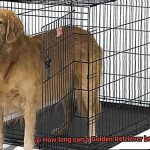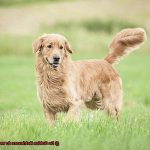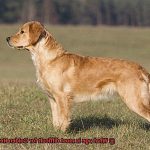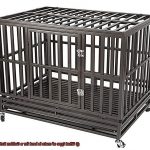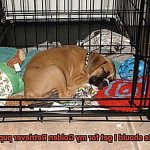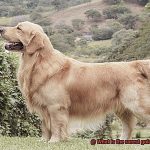Are you ready to add a furry companion to your household, but worried about shedding? Fear not, because we’re here to help. The question of whether Golden Retrievers or Labrador Retrievers shed more has been asked countless times. Both breeds are beloved by families worldwide and have unique features that require attention. Choosing the right breed to fit your lifestyle is crucial when welcoming a dog into your home.
Now let’s get down to business – both Golden Retrievers and Labrador Retrievers shed fur, but the level and duration depend on various factors such as their genes, health, and grooming habits. Some dogs shed all year round, while others drop clumps of fur twice a year. Golden Retrievers have longer hair than Labradors, which can make their shedding more noticeable. Labradors tend to shed less due to their short, dense hairs.
In this blog post, we’ll give you an in-depth analysis of these breeds’ shedding tendencies. We’ll explore the factors that influence their shedding patterns and provide tips on how to manage it effectively. Additionally, we’ll discuss grooming techniques that will help keep your pup looking fantastic while reducing the amount of hair they leave behind.
In this post, you’ll be equipped with everything you need to know about Golden Retriever and Labrador Retriever shedding tendencies. So sit back, relax and let us guide you through this hairy topic.
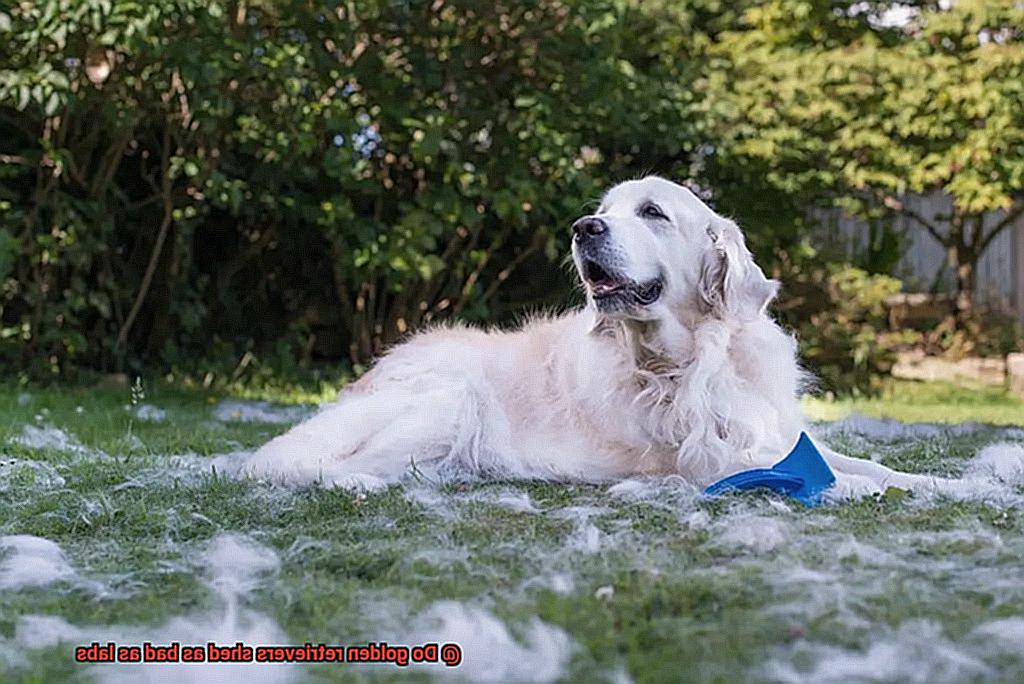
Comparing the Shedding of Golden Retrievers and Labs
Contents
Golden Retrievers and Labrador Retrievers are two of the most popular dog breeds in the United States, beloved for their friendly personalities, loyalty, and intelligence. However, when it comes to shedding, these furry friends can be quite a handful. Let’s take a closer look at how the two breeds compare.
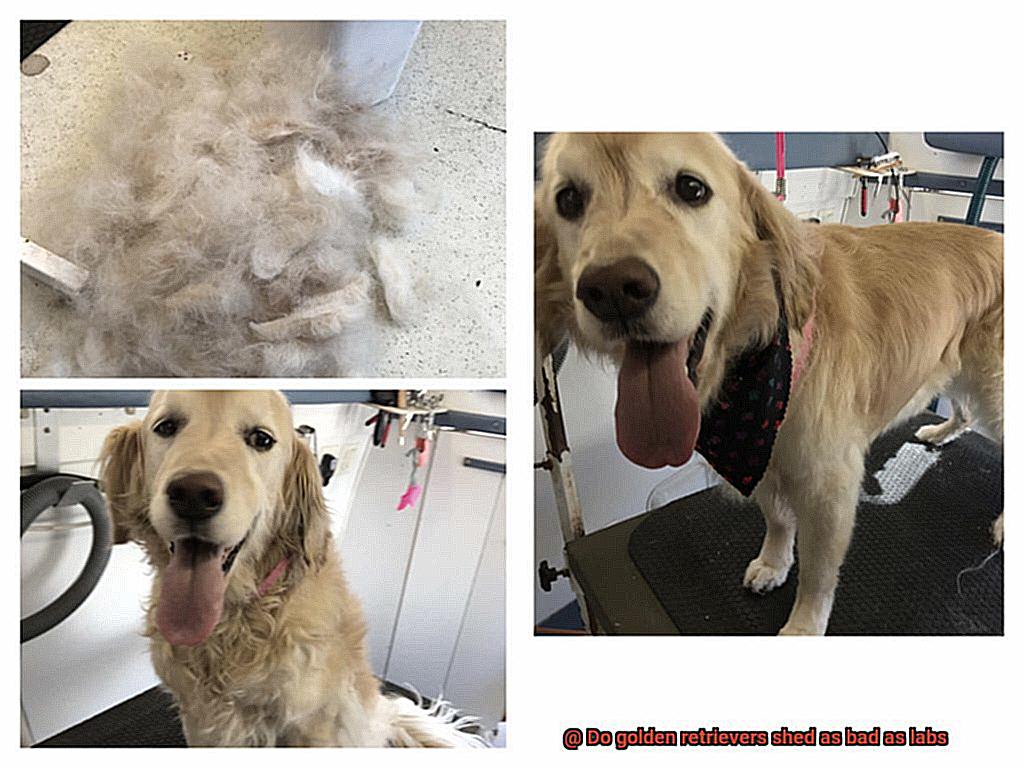
Both Golden Retrievers and Labs are moderate to heavy shedders with a double coat that sheds seasonally. This means that twice a year, they will lose their undercoat, resulting in heavy shedding. During these periods, pet owners may need to groom them more frequently to keep up with the shedding. But there are some differences between the two breeds when it comes to shedding.
Golden Retrievers have a luxurious, thick, water-resistant double coat that sheds moderately throughout the year. During seasonal shedding periods, which typically occur twice a year, they will shed heavily for a few weeks. However, their long hair can easily tangle and mat if not properly maintained, leading to even more shedding.
On the other hand, Labs have a short, dense coat that also sheds moderately throughout the year but may shed heavily during seasonal changes. Their coarser hair is less likely to tangle or mat, which can make grooming easier.
While genetics plays a role in how much a dog sheds, factors like diet, stress levels, and grooming habits can also affect shedding. A well-balanced diet can help reduce excessive shedding in dogs by providing them with the necessary nutrients to maintain healthy skin and coat. Regular check-ups with a veterinarian can help identify any underlying health issues that may be contributing to excessive shedding.
When it comes to grooming, both breeds require regular brushing to help manage shedding.
Golden Retrievers should be brushed at least once a week to remove loose fur and prevent matting. Meanwhile, Labs also benefit from weekly brushing but may require more frequent brushing during seasonal changes.
Factors Affecting Shedding in Dogs
Shedding is a natural process for dogs, but it can be influenced by several factors. To understand what affects shedding in dogs, let’s take a closer look.
Breed is one of the most significant factors affecting shedding in dogs. For instance, breeds like Golden Retrievers and Labrador Retrievers have thick double coats that shed heavily. These breeds were initially bred for outdoor activities that required them to have a thick coat to protect them from harsh weather conditions. On the other hand, breeds like Poodles and Bichons don’t shed much as they have hair-like coats instead of fur.
Age is another essential factor that can affect shedding in dogs. Puppies tend to shed less than adult dogs because they have not yet fully developed their coat. As dogs age, their coat texture and thickness may change, which can impact shedding.
The overall health of your furry friend is also a critical factor in shedding patterns. Dogs with skin allergies or other health issues may shed more than healthy dogs. Dogs that are not groomed regularly or fed an improper diet can also lead to excessive shedding.
Environmental factors can also affect the amount of shedding in dogs. Changes in temperature or season can cause a dog’s coat to shed more than usual. Dogs that spend more time outdoors or reside in dusty environments may also shed more frequently.
As a dog owner, understanding these factors can help you manage your pet’s shedding better. Providing proper nutrition and grooming, as well as monitoring any health issues, can help reduce excessive shedding and keep your furry friend healthy and happy.
The Difference in Hair Texture between the Breeds
While Golden Retrievers and Labrador Retrievers may look alike, their coats are vastly different. Golden Retrievers boast longer and thicker hair with a dense undercoat, whereas Labs have shorter and coarser hair with a water-resistant topcoat.
As avid hunters, Golden Retrievers were bred for colder climates and have a thick undercoat to keep them warm. However, this also means that they shed more during shedding season than Labs do. In contrast, Labs were bred for water hunting and retrieving, which is why they have a water-resistant topcoat that helps them stay dry when they dive into the water.
It’s crucial to note that shedding is a natural process for all dogs, and some breeds shed more than others. Although Golden Retrievers may shed more than Labs, it doesn’t mean they shed “as bad.” There are ways to manage shedding in Golden Retrievers, such as regular brushing and grooming to remove loose fur before it falls off around the house.
When considering adopting one of these breeds, understanding the difference in their hair textures is essential for proper grooming and care. Each dog is unique, so it’s best to consult with a veterinarian or professional groomer for specific tips and advice on managing your dog’s shedding patterns.
Grooming Tips to Reduce Shedding
Golden retrievers are beloved pets known for their friendly disposition and luscious fur. But as much as we adore their soft, shiny coats, we can’t deny that they shed… a lot. Luckily, there are some grooming techniques that can help minimize the amount of hair they leave behind. Here are five tips to help reduce shedding in golden retrievers:
Brush Regularly
The most effective way to reduce shedding is through regular brushing. Daily brushing helps remove loose fur before it falls off, reducing the amount of hair that ends up on your furniture and floors. It also distributes natural oils evenly throughout your dog’s coat, keeping it healthy and shiny. Use a slicker brush or undercoat rake to reach down to the undercoat where most of the shedding occurs.
Bathe with Care
Bathing your golden retriever regularly can also help reduce shedding. However, it’s essential to use a shampoo that’s specifically designed for dogs and not human shampoo. Human shampoos can strip away natural oils from your dog’s skin, causing dryness and irritation. Additionally, using a conditioner can help keep their coat healthy and shiny.
Trim Regularly
Trimming your dog’s hair regularly is another grooming technique that can help reduce shedding. This technique is particularly useful for golden retrievers since they have long hair that can easily get matted and tangled. Trimming their hair will not only keep them looking neat but also reduce the amount of hair they shed.
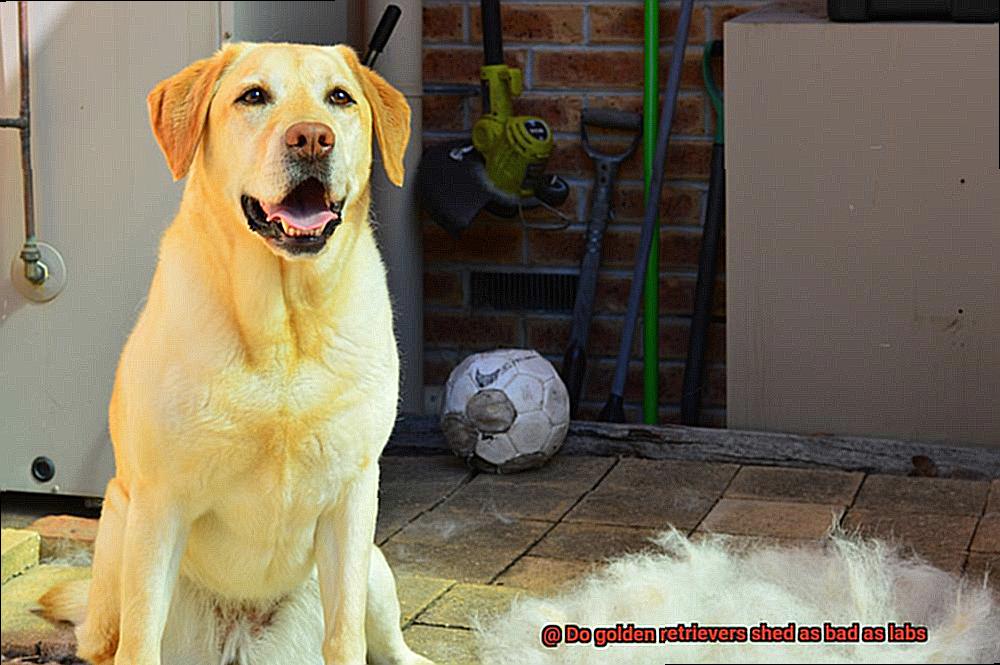
Feed a Healthy Diet
Maintaining a healthy diet is another factor in reducing shedding. Feeding your golden retriever high-quality food with essential fatty acids can help keep their coat healthy and reduce shedding. It’s important to follow feeding guidelines and not overfeed, as excess weight can lead to more shedding.
Visit Groomer Occasionally
Finally, regular visits to a professional groomer can also help reduce shedding. They can trim your dog’s fur and use specialized tools to remove excess hair. This can be especially helpful during shedding season, which typically occurs twice a year.
Diet and Health Considerations for Minimizing Shedding
There are diet and health considerations that can help minimize shedding in your beloved pup.
First and foremost, a well-balanced diet is vital for reducing excessive shedding. Your furry friend needs a diet rich in fatty acids such as omega-3 and omega-6 to maintain healthy skin and reduce inflammation that can lead to shedding.
In addition to a balanced diet, regular grooming and exercise are also essential for maintaining a healthy coat and reducing shedding. Regular brushing removes loose fur and distributes natural oils throughout your pup’s coat, promoting healthy skin and reducing shedding. Exercise improves circulation, which also enhances skin and coat health.
Furthermore, health issues like allergies, skin infections, and hormonal imbalances can lead to excessive shedding in golden retrievers. Therefore, it’s crucial to stay on top of vet visits to ensure any underlying health problems are addressed promptly.
Supplements such as biotin, zinc, and vitamin E can also help support healthy skin and coat while reducing excessive shedding. However, before adding any supplements to your dog’s diet, it is important to consult with your veterinarian to ensure they are safe and appropriate for your dog’s individual needs.
Conclusion
In conclusion, shedding is a natural process for our furry friends, but it can be managed effectively with proper care and grooming. When it comes to Golden Retrievers and Labrador Retrievers, both breeds shed moderately to heavily throughout the year. However, their shedding patterns are influenced by various factors such as genetics, health, and grooming habits.
Golden Retrievers have longer hair than Labs, which makes their shedding more noticeable. On the other hand, Labs tend to shed less due to their short, dense hairs. But don’t worry – there are plenty of ways to manage your pup’s shedding regardless of their breed.
Factors that affect shedding in dogs include breed, age, health status, and environmental factors. Providing a well-balanced diet rich in essential fatty acids can help reduce excessive shedding in dogs. Regular brushing and grooming also play a significant role in managing shedding patterns.
To minimize shedding in Golden Retrievers specifically, regular brushing with slicker brush or undercoat rake is crucial. Bathing with dog-specific shampoo and conditioner can also help keep their coat healthy and shiny while trimming their hair regularly reduces the amount of hair they shed. Feeding them a healthy diet with essential fatty acids and visiting professional groomers occasionally are also effective ways of minimizing shedding.




